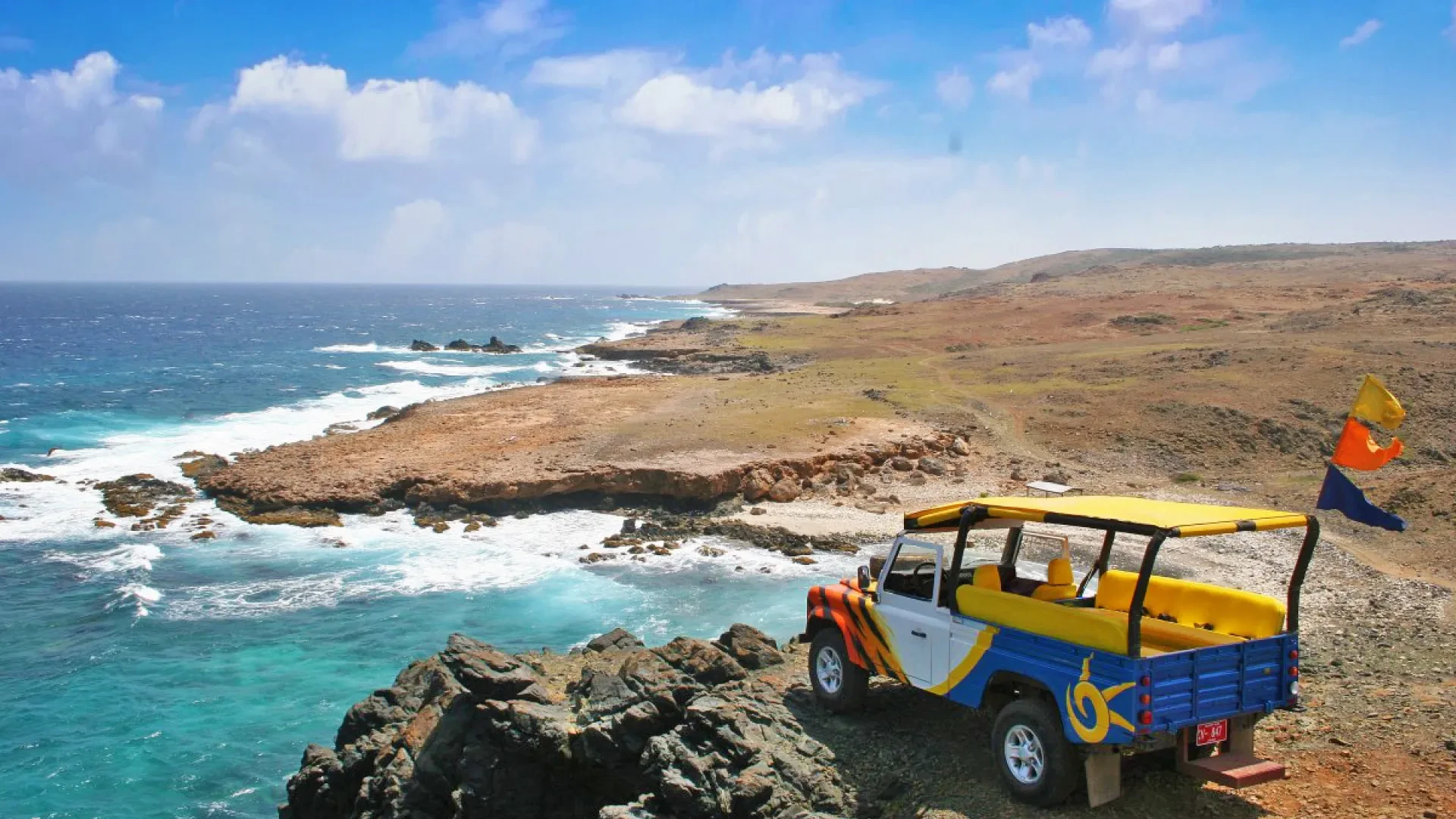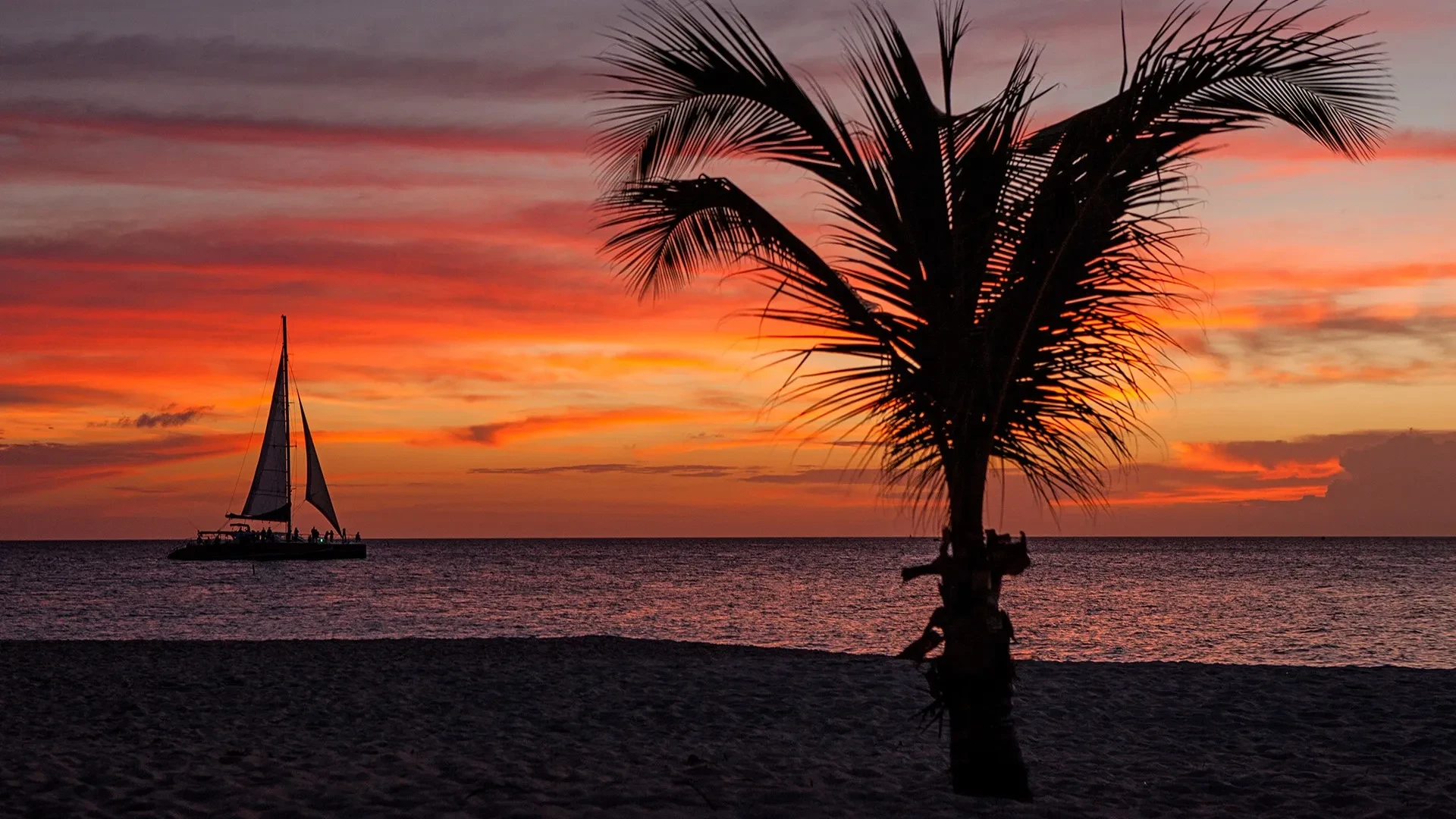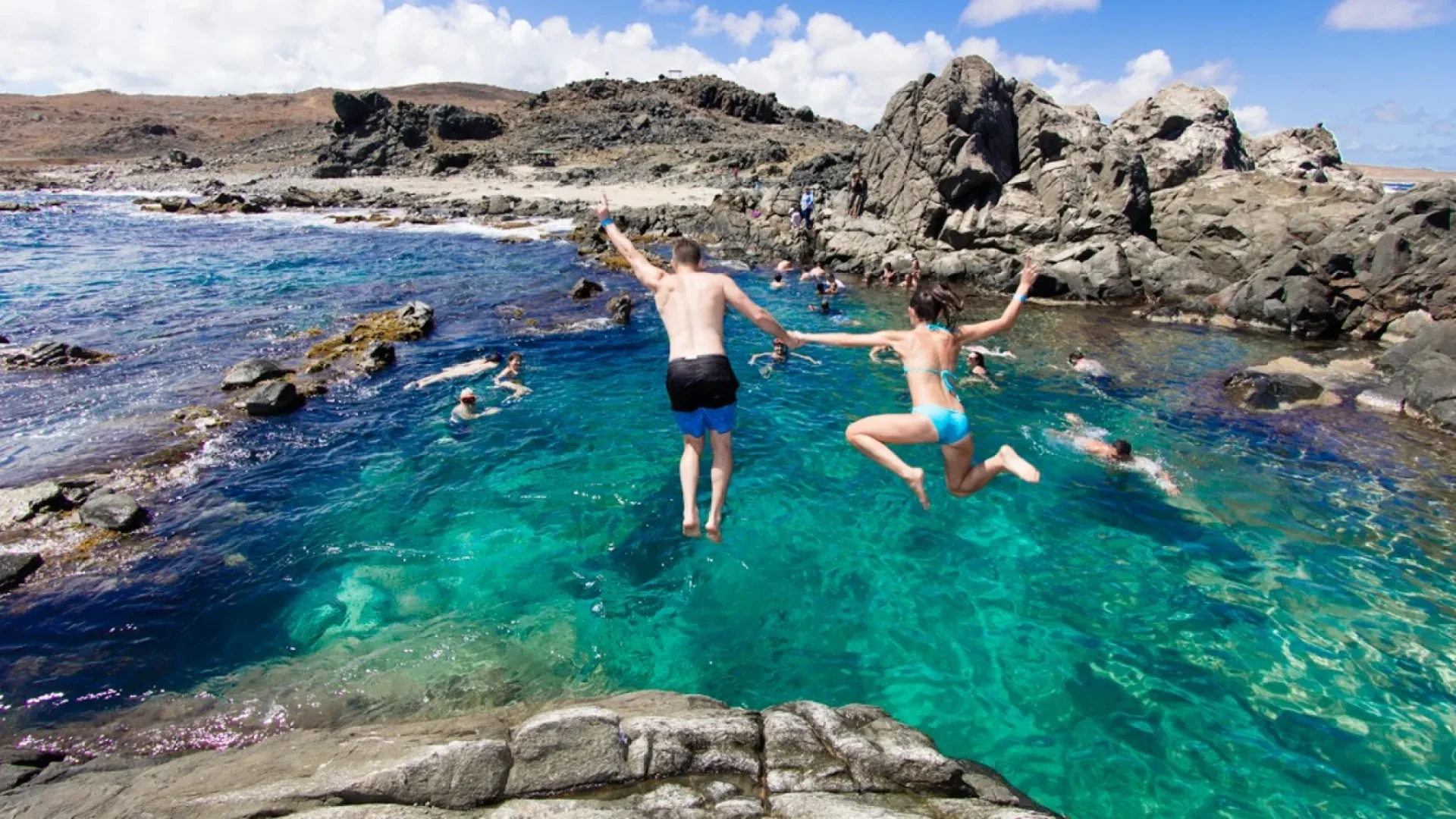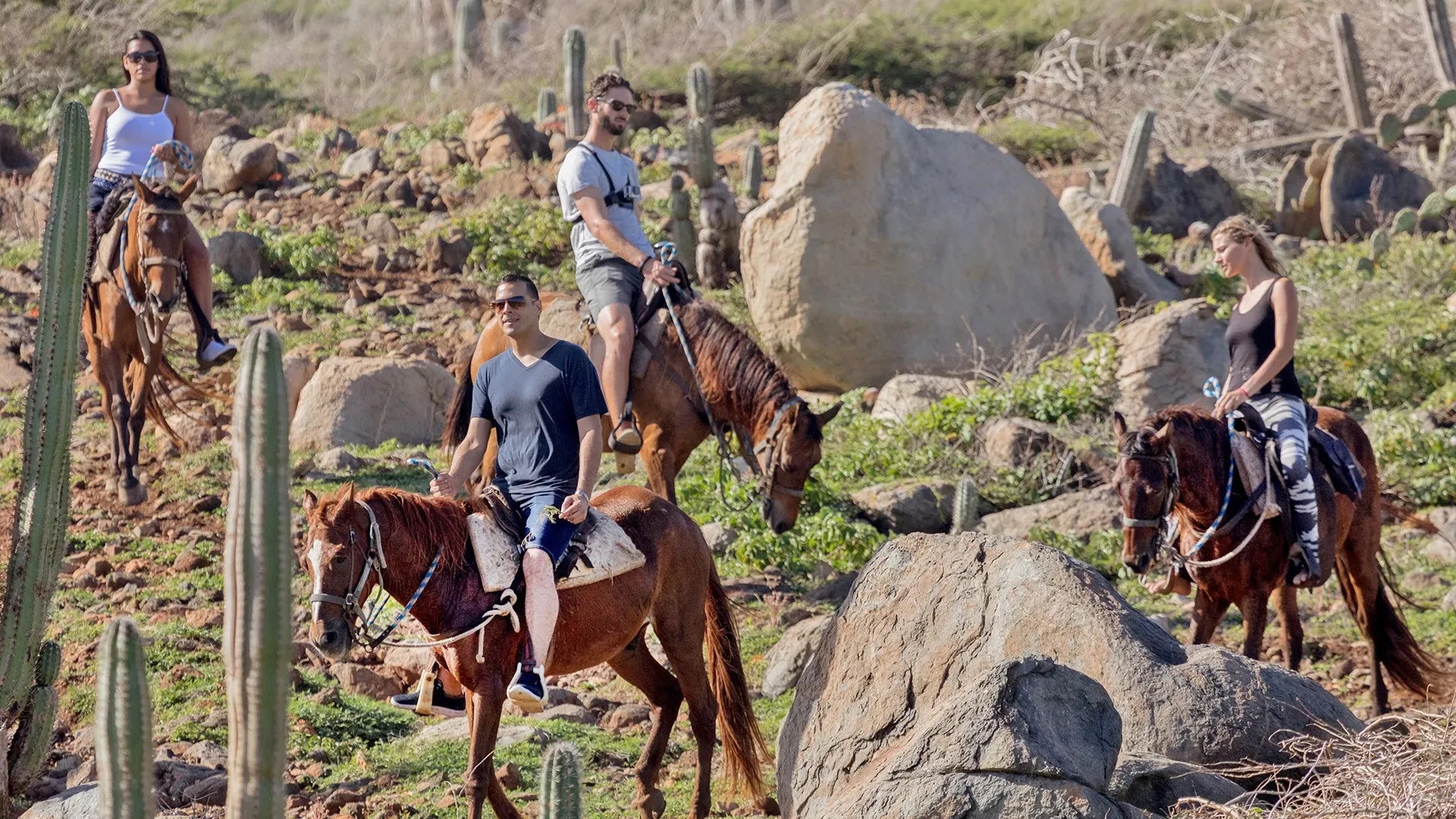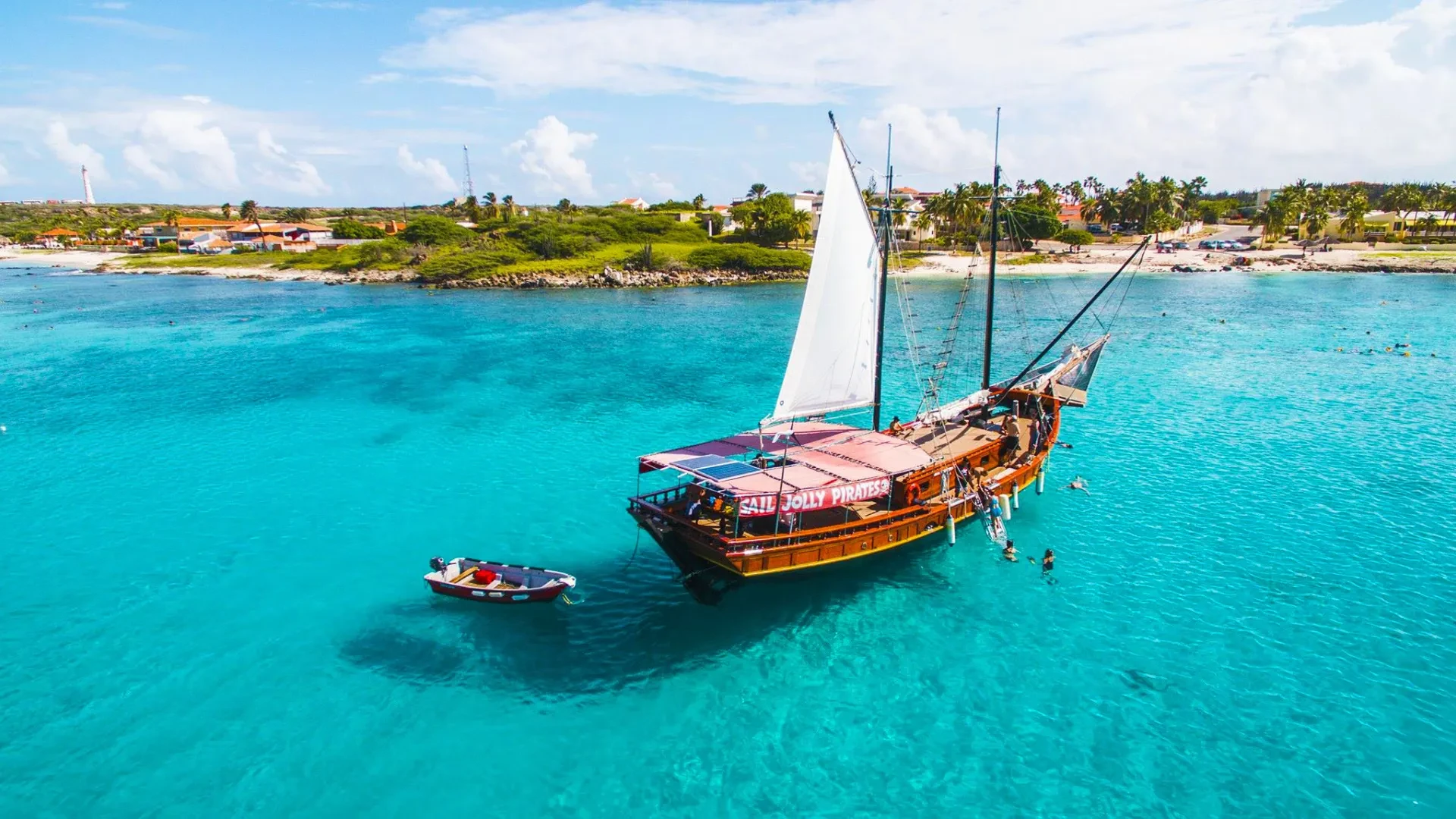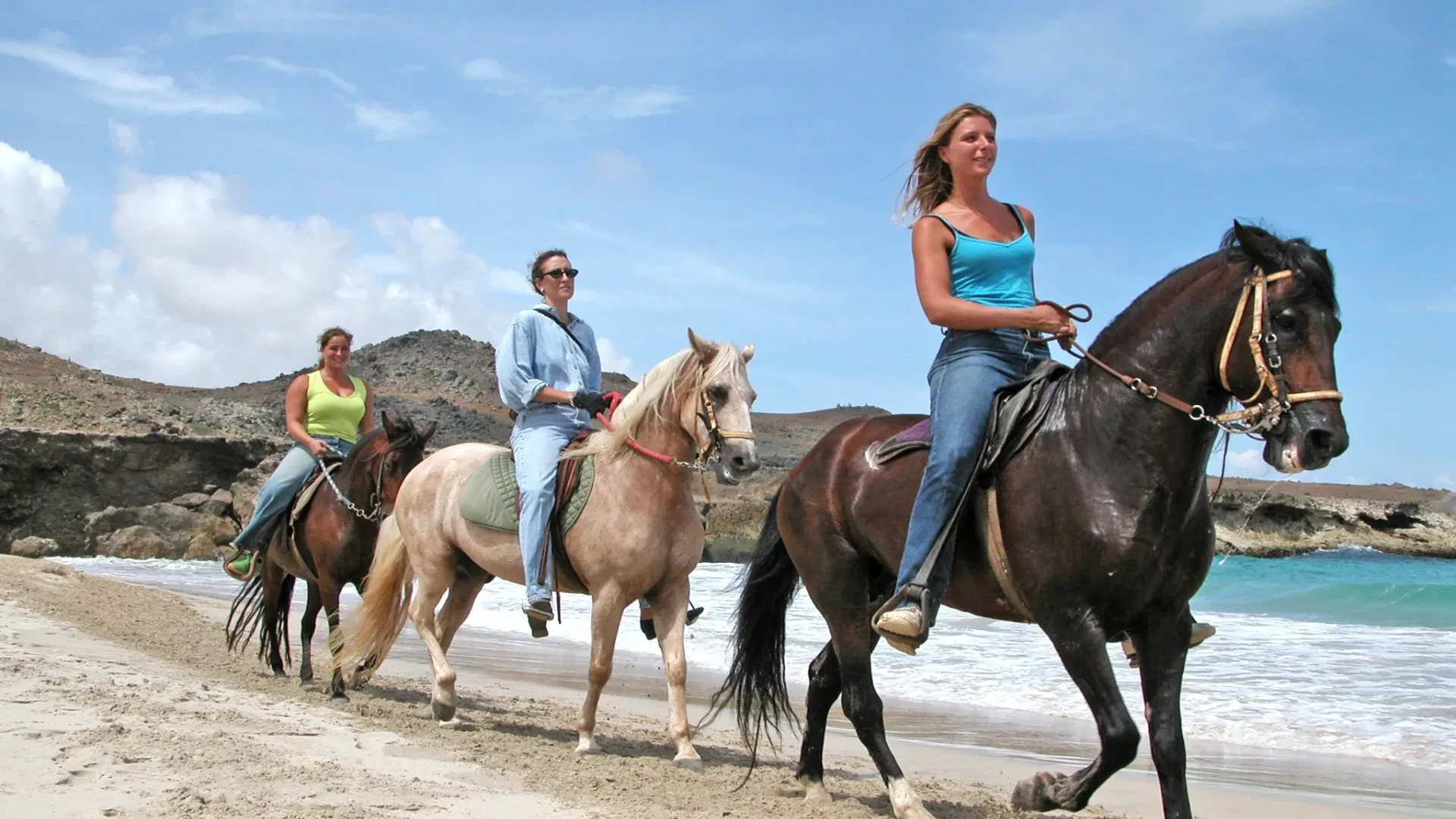Levente
August 05.
Been there. Done that.
Been there. Done that.
August 05.
The Aruba Ariba was first poured in 1963 at the Hilton Aruba Caribbean Resort by bartender Juan “Jocky” Tromp. It quickly became a local favorite, thanks to its bold mix of spirits and tropical juices.
What truly sets it apart is Coecoei, a red Aruban liqueur made from agave sap, rum, and local herbs. You won’t find it exported — making the drink a bit of a hidden gem.
Over time, hotels and bartenders across the island have put their own spin on the recipe, but the heart of the Aruba Ariba remains unchanged: it’s strong, fruity, and unforgettable.

The original Aruba Ariba was created in 1963 and kept things simple and strong. Today’s version is a bit more tropical and layered, but both deliver that island punch.
Can’t get Coecoei? Try cherry brandy, passion fruit nectar, or grenadine with a hint of anise.
Making an Aruba Ariba cocktail at home is easier than it looks. Here’s everything you need to shake up a glass of tropical escape.
To get started, grab these basic bar tools and glassware:
Here’s how to mix it like a local bartender:
The Aruba Ariba is bold, fruity, and deceptively strong. The first sip hits with tropical sweetness from the juice blend and crème de banana, followed by a warm, boozy kick from the rum and vodka.
Coecoei adds a unique herbal note — slightly sweet with hints of anise and spice. If you’re using a substitute like cherry brandy or passion fruit nectar, the flavor will shift slightly, but it’ll still deliver that island vibe.
It’s a balanced cocktail: not too sweet, not too heavy, and dangerously drinkable in the sun.
Presentation matters with this one. The Aruba Ariba is usually served in a tall glass — either a highball or hurricane — with plenty of crushed ice to keep it cold in the island heat.
Classic garnish:
For an extra tropical touch, some bartenders add a paper umbrella or float the Grand Marnier for a layered look. Want to impress? Use fresh-squeezed juice and chill your glass ahead of time.
This drink shines poolside, beachside, or anywhere sunny.

Want your Aruba Ariba to taste like it does in Aruba? A few small tweaks make a big difference.
And if you're in Aruba? Order one at the Hilton’s Mira Solo Bar — the birthplace of this cocktail.

Coecoei (pronounced koo-koo-ee) is the deep red liqueur that gives the Aruba Ariba its signature color and a subtle herbal sweetness. It’s made in Aruba from agave sap, rum, local spices, and a touch of sugar. The flavor is slightly syrupy, with notes of anise, vanilla, and warm spice.
The catch? You can’t buy it outside Aruba. It’s not exported, and even on the island, it’s mainly used in traditional cocktails like the Aruba Ariba or a few family recipes.
If you’re mixing one up at home, try one of these:
It’s not exactly the same — but with the right mix, you’ll still get the island feel.
Every Caribbean island has its signature cocktail. Aruba has the Aruba Ariba. Curaçao is known for its bright blue Blue Curaçao cocktails. In St. Maarten, it’s all about guavaberry rum — often blended into creamy coladas or sipped straight.
These drinks reflect the flavors and spirit of each island. So wherever you are, mix one up and toast to the tropics.
The key ingredients in the Aruba Ariba cocktail are:
Yes, the Aruba Ariba cocktail is a popular and signature drink in Aruba.
Coecoei liqueur is a traditional Aruban spirit that has a unique and distinct composition. It is made from the sap of the agave plant, which is native to the region. This sap is mixed with sugar and rum, and sometimes various herbs and spices are added to create a distinct flavor profile. The resulting liqueur has a reddish color and a sweet, herbal taste.
Coecoei is a key ingredient in several Caribbean cocktails, most notably the "Aruba Ariba". However, it's important to note that Coecoei is not widely exported, making it a special treat typically enjoyed only in Aruba.
Yes, the Aruba Ariba cocktail can be customized with a variety of tropical fruit juices to suit personal preferences.
The Aruba Ariba cocktail recipe reflects a fusion of African, Dutch, Indonesian, Spanish, and Indian cultures.

Creating this travel magazine takes an insane amount of time and money. If you’ve found it useful and would like to support me in helping other travelers like you, your donation would go a long way. Thanks, you’re the best!
